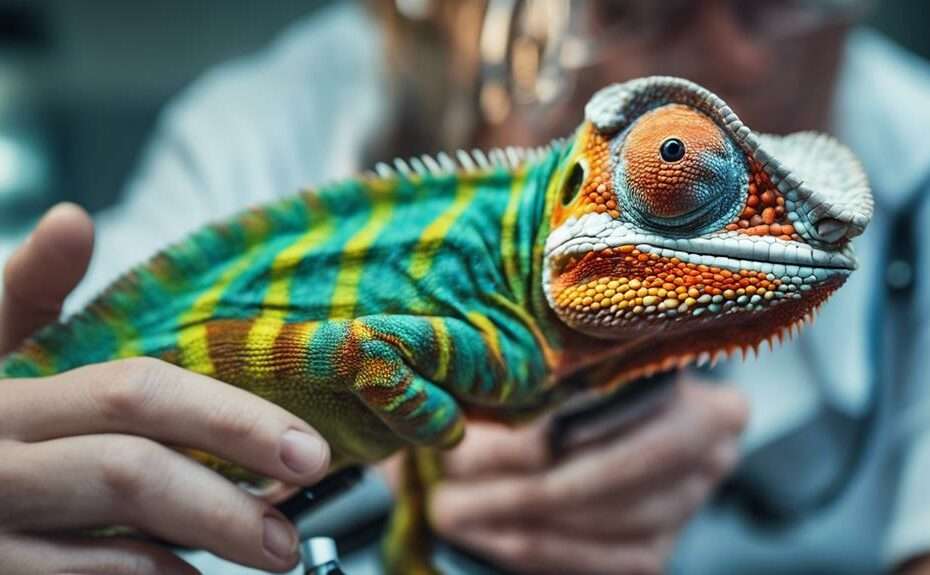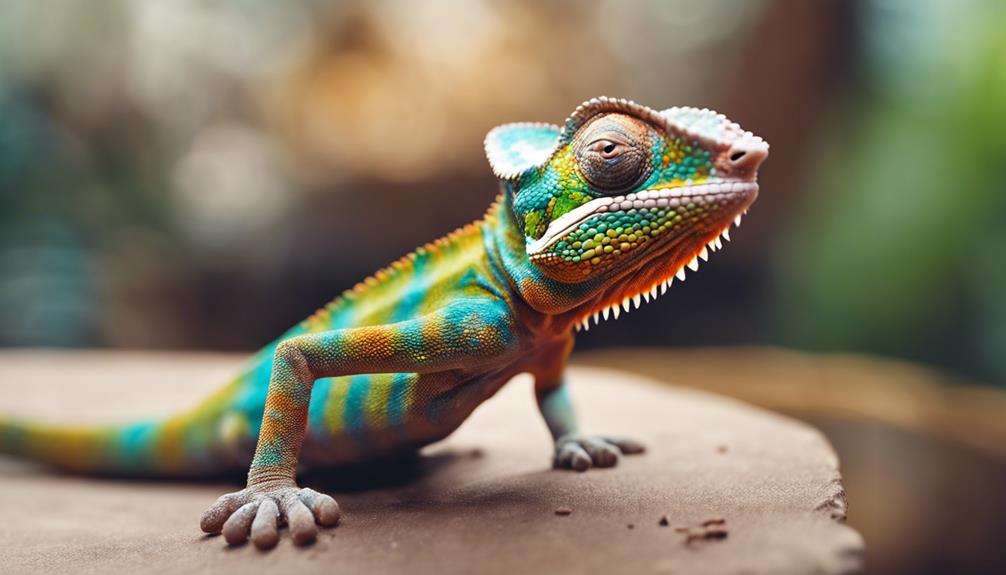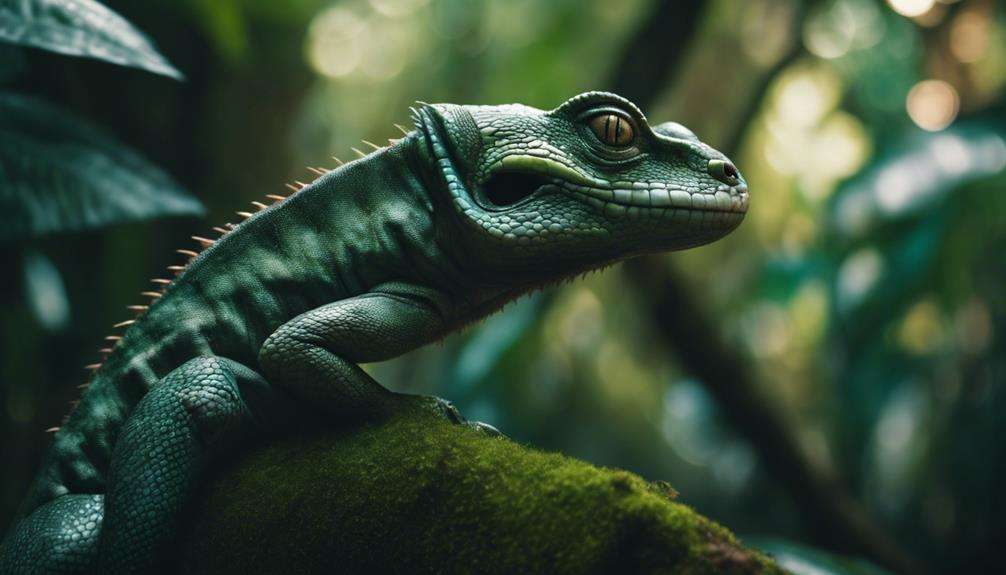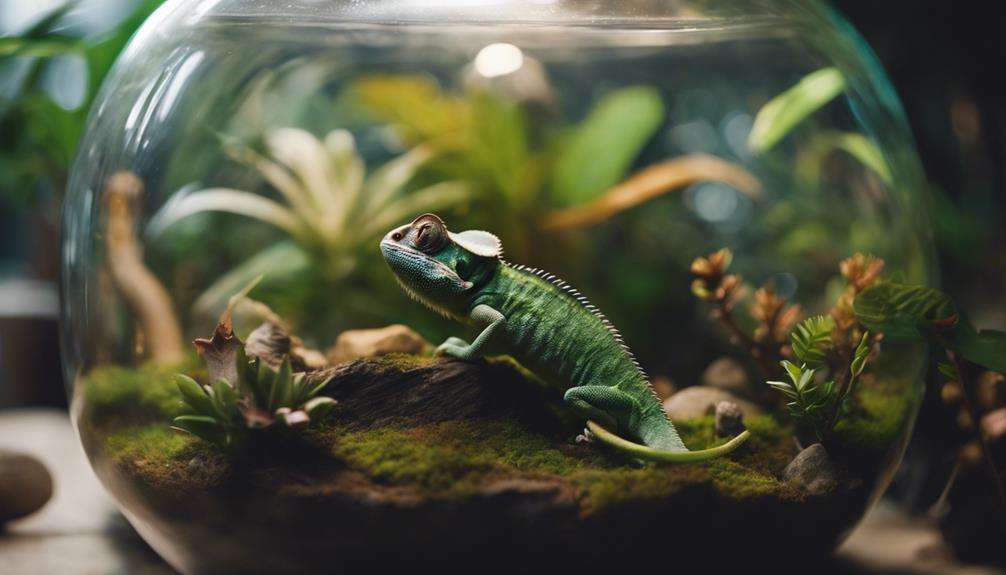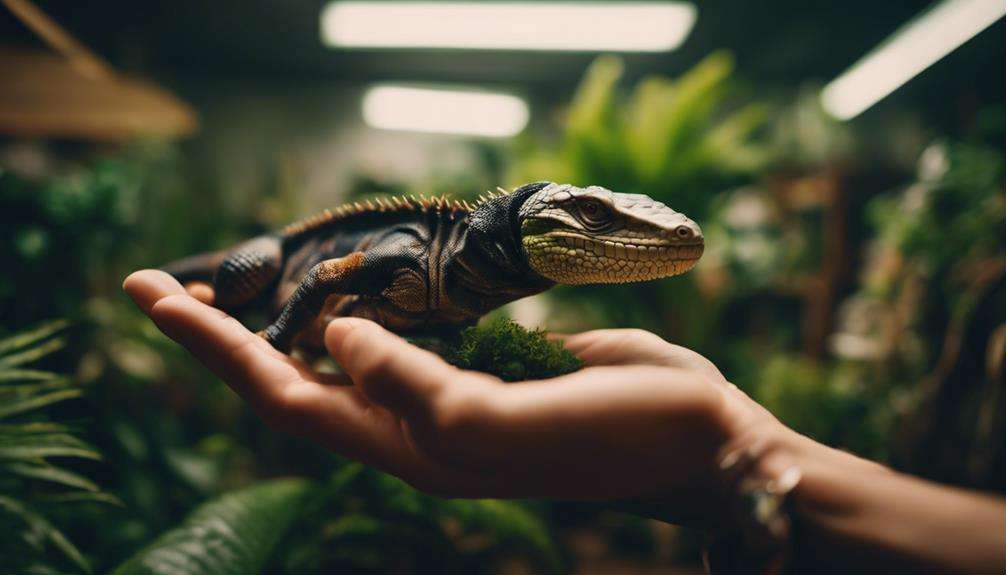Are you aware of the essential health check guidelines necessary to ensure the well-being of your exotic reptile companions?
Understanding the specific needs and requirements for maintaining the health of these unique creatures is crucial.
By following expert recommendations on physical examinations, anesthesia, diagnostics, and safety measures, you can provide the best care for your exotic reptiles.
Stay tuned to uncover the top guidelines that will help you safeguard the health of your scaly friends effectively.
Key Takeaways
- Thoroughly assess body and behavior for comprehensive health evaluation.
- Use specialized diagnostic techniques and equipment for accurate assessments.
- Administer medications and fluid therapy tailored to weight and species.
- Collaborate with specialized veterinarians for optimal care and treatment.
Physical Examination Guidelines
When conducting a physical examination on exotic reptiles, it's crucial to thoroughly assess various aspects of their body and behavior to ensure their well-being and detect any potential health concerns.
As part of exotic pet care, a comprehensive physical examination includes evaluating body condition, skin quality, eyes, nose, mouth, limbs, abdomen, cloaca, and respiratory patterns. Palpation of the abdomen, cloaca, and limbs is essential to identify any abnormalities like metabolic bone disease. Special attention should be given to signs of illness such as dehydration, abnormal growths, and injuries.
Behavior observation is also critical in assessing the overall health of exotic reptiles. Proper handling techniques are essential during the examination to minimize stress and ensure accurate assessment.
Documenting details like weight, length, and any abnormalities detected is crucial for monitoring and treatment purposes. By following these physical examination guidelines, you can effectively monitor the health of your exotic reptile and address any issues promptly.
Anesthesia and Pain Management Tips
For effective anesthesia and pain management in exotic reptiles, precise dosing and vigilant monitoring are paramount due to their unique metabolic rates and ability to conceal signs of discomfort. When administering anesthesia to reptiles, it's crucial to consider their slower metabolic rates compared to mammals, ensuring accurate dosing to prevent complications.
Pain management in reptiles presents challenges as they often mask signs of discomfort, making it essential to use local anesthetics cautiously to minimize risks. Monitoring vital signs such as heart rate, respiratory rate, and body temperature during anesthesia is critical to ensure the reptile's safety throughout the procedure.
Moreover, post-operative pain management in reptiles typically involves a multimodal approach to provide effective relief while minimizing side effects. By carefully considering these factors and tailoring anesthesia and pain management strategies to the unique needs of reptiles, veterinarians can help ensure the well-being of these exotic pets.
Diagnostic Techniques for Reptiles

Diagnostic techniques for reptiles encompass a range of specialized assessments, including physical examination, blood work, radiographs, and fecal analysis, all tailored to evaluate their overall health. When dealing with exotic pets, it's crucial to understand the unique anatomical features of reptiles, which often necessitate specialized diagnostic equipment and expertise for accurate assessments.
For an effective diagnostic approach, consider the following:
- Palpation and Auscultation: These are essential components of a thorough physical examination in reptiles, aiding in the detection of abnormalities.
- Ophthalmic Exams: Evaluating the eyes can provide valuable insights into the reptile's health status.
- Ultrasonography: This diagnostic tool is particularly useful for assessing internal structures and organs in reptiles.
- Endoscopy: Another valuable technique for examining the internal health of reptiles, allowing for detailed visualizations of different organ systems.
Surgical Considerations for Exotic Reptiles
Specialized knowledge and equipment are essential for performing surgical procedures on exotic reptiles due to their unique anatomy and physiology. When considering surgical procedures for exotic reptiles, it's crucial to adapt anesthesia protocols to each species for safe sedation. Monitoring during surgery is vital, as reptiles may react differently to anesthesia than other animals. Factors like heat loss, stress, and specialized anatomy must be carefully managed to prevent surgical complications.
Post-operative care for exotic reptiles should include maintaining specific temperature and humidity levels, as well as providing appropriate feeding to support recovery and healing. Additionally, ensuring proper use of heat lamps during recovery is essential for maintaining the reptile's health. By following tailored anesthesia protocols, closely monitoring the surgical process, and providing appropriate post-operative care, veterinary professionals can help exotic reptiles recover successfully from surgical procedures.
Medication Administration and Fluid Therapy
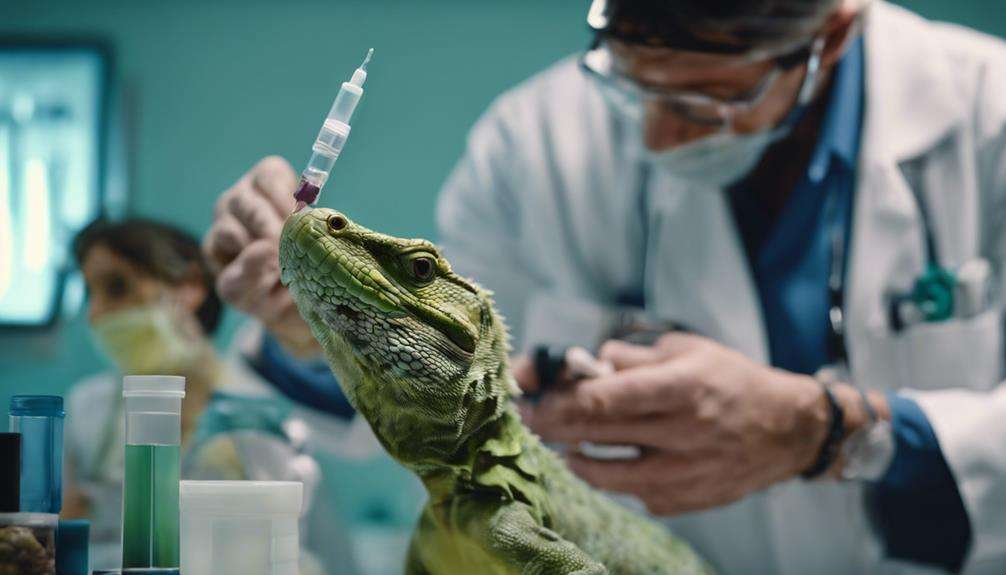
Administering medications and providing fluid therapy to exotic reptiles requires precise dosing and careful monitoring to ensure optimal health outcomes. When it comes to medication administration in reptiles, accurate dosing based on weight and species is crucial. Injectable medications are commonly given in the hind limbs or subcutaneously. Oral medications can be administered by mixing with food, using a syringe, or through a feeding tube.
For fluid therapy in reptiles, maintaining hydration and electrolyte balance is essential during illness or surgery. Subcutaneous or intracoelomic routes are typical for fluid therapy, with close monitoring of fluid volume and rate to prevent dehydration and maintain electrolyte balance. Keep in mind the specific needs of each reptile species when administering medications and fluids to ensure their well-being.
Frequently Asked Questions
How Do I Know if My Reptile Is in Good Health?
To know if your reptile is healthy, observe signs like consistent eating habits, active behavior, normal weight, and overall demeanor. Any changes in diet, weight loss, unusual behavior, or physical symptoms should prompt a vet visit for evaluation and treatment.
How Often Should I Take My Reptile to the Vet?
You should take your reptile for routine check-ups to ensure their well-being. Regular veterinary care, preventive measures, and health monitoring through regular assessments are essential for keeping your exotic pet healthy and happy.
Do Reptiles Need Vaccinations?
Reptiles do not need vaccinations like traditional pets. Their unique immune systems mean preventive care through proper husbandry is key. Consult with a reptile vet for tailored recommendations. Vaccinations pose risks; focus on maintaining health.
What Is a Physical Exam for a Bearded Dragon?
In the world of Bearded Dragons, a physical exam is like peeling back the layers of a mysterious book. Assess body, skin, eyes, ears, nose, mouth, limbs, respiratory rate, and cloaca for health clues.
Conclusion
So there you have it, following these top health check guidelines for exotic reptiles will ensure their well-being and longevity.
Remember, keeping your scaly friends healthy and happy is a priority.
And who knows, maybe one day they'll thank you by not giving you a heart attack when they decide to escape their enclosure for a little adventure around the house.
Stay vigilant, reptile enthusiasts!
